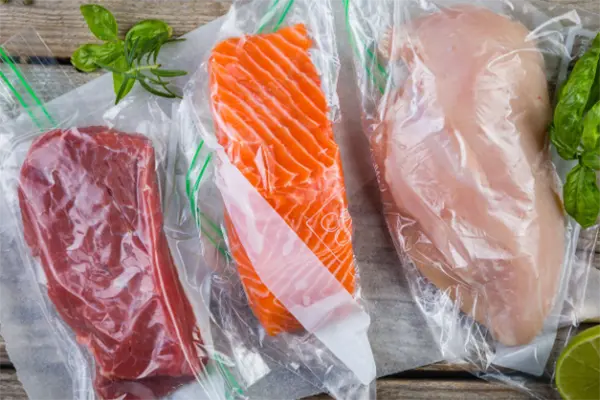Have you ever wondered how your favorite food products stay fresh for longer periods? The answer lies in vacuum packaging. Vacuum packaging is a technique used to extend the shelf life of various perishable items by removing air from the packaging. In this article, we’ll delve into the different types of vacuum packaging methods commonly used in the industry. From delicate fruits to hearty meats, vacuum packaging plays a vital role in preserving freshness, flavor, and quality.
Vacuum packaging involves the removal of air from the packaging environment before sealing the product. By eliminating oxygen, the growth of bacteria, mold, and other microorganisms is inhibited, keeping the contents fresh and safe for consumption. The absence of air also prevents oxidation, which can lead to flavor deterioration and spoilage.
Types of Vacuum Packaging
- Chamber Vacuum Packaging
Chamber vacuum packaging is a widely used method in the food industry. The process involves placing the product to be packaged inside a vacuum chamber. The chamber is sealed, and air is then removed from the chamber, creating a vacuum. Once the desired vacuum level is reached, the chamber is opened, and the package is sealed. This method is highly effective for both solid and liquid food items, as the vacuum level can be controlled precisely.
- External Vacuum Packaging
In external vacuum packaging, the product to be packaged is placed in a specialized vacuum bag or pouch, and one end of the bag is inserted into the vacuum sealer. The machine then removes the air from the bag, creating a vacuum, and seals the bag. External vacuum packaging is commonly used for home use and is suitable for preserving a wide range of food items, such as meats, vegetables, and snacks.
- Retractable Nozzle Vacuum Packaging
Retractable nozzle vacuum packaging, also known as nozzle-type vacuum packaging, is commonly used in industrial settings. In this method, the product is placed in a vacuum pouch, and a nozzle is inserted into the bag. The nozzle extracts the air from the bag, creating a vacuum, and then retracts before the bag is sealed. This packaging method is efficient for high-volume production and is often used for packaging items like cheese, deli meats, and processed foods.
Benefits of Vacuum Packaging
Vacuum packaging offers numerous benefits, making it a popular choice in various industries. Let’s explore some of the advantages:
- Extended Shelf Life
Vacuum packaging significantly extends the shelf life of perishable items by preventing the growth of spoilage-causing microorganisms. By removing oxygen, the primary factor that leads to food deterioration, vacuum packaging helps maintain freshness, flavor, and nutritional value for an extended period. It allows both businesses and consumers to enjoy products long after their regular expiration dates.
- Preservation of Freshness and Flavor
Vacuum packaging preserves the freshness, aroma, and flavor of food products. By sealing the product in an airtight environment, the natural flavors and aromas are locked in, ensuring that your favorite foods taste just as delicious as when they were first packaged. Whether it’s fruits, vegetables, or marinated meats, vacuum packaging helps retain the original quality and sensory attributes.
- Protection Against Freezer Burn
Freezer burn, a common issue when storing food in the freezer, can affect the quality and taste of the products. Vacuum packaging eliminates the exposure to air, preventing freezer burn and maintaining the texture and taste of frozen items. This is particularly beneficial for storing meats, seafood, and other frozen foods for longer durations, without compromising their quality.
- Efficient Space Utilization
Vacuum packaging reduces the size of the packaged product by removing excess air. This compact packaging not only saves storage space but also allows for efficient transportation, both for businesses and consumers. Vacuum-sealed products take up less room in refrigerators, freezers, and pantries, enabling you to optimize your available space.
Conclusion
Vacuum packaging is a valuable technique used to preserve the freshness, flavor, and quality of various perishable items. Whether it’s the chamber vacuum packaging used in industrial settings, external vacuum packaging for home use, or retractable nozzle vacuum packaging for high-volume production, each method serves the purpose of extending shelf life and maintaining product integrity. Embracing vacuum packaging not only benefits businesses by reducing food waste but also enables consumers to enjoy their favorite foods for longer periods. So, next time you reach for a vacuum-sealed product, appreciate the technology that keeps it fresh and flavorful.
Post time: 04-09-2024


